Steal Syndrome
Medically reviewed by Drugs.com. Last updated on Aug 4, 2025.
What is steal syndrome?
Steal syndrome is a condition that causes blood flow to be diverted (stolen) from one part of the body to another. Steal syndrome can happen in several body areas, such as the arms, legs, or brain.
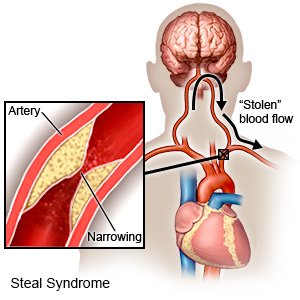 |
What increases my risk for steal syndrome?
- Blocked or narrowed artery
- Chronic kidney disease or a fistula or graft created for kidney dialysis
- Problems with how your blood vessels were formed before you were born
- Certain surgeries, such as coarctation of the aorta correction
What are the signs and symptoms of steal syndrome?
Signs and symptoms depend on which body area is affected:
- Pain that happens all the time or gets worse with activity
- Numbness, tingling, or cold areas
- Muscle weakness
- Dizziness or vertigo (feeling that you are moving when you are not)
- Blurred vision
- Skin ulcers or gangrene (dark or black skin from tissue death)
How is steal syndrome diagnosed?
Your healthcare provider will ask about your signs and symptoms. Your provider may check for differences in blood pressure between your arms or legs. Your provider will listen to your heart and check for a whooshing sound in your arteries. Contrast liquid may be used for some of the following tests to help arteries show up better in pictures. Tell the healthcare provider if you have ever had an allergic reaction to contrast liquid.
- Ultrasound, x-ray, or angiography pictures may be used to show a blocked or narrow artery.
- Cardiac catheterization is a procedure to check how well your heart is pumping. A catheter (long thin tube) is inserted into your arm, neck, or groin and moved into your heart. An x-ray may be used to guide the tube to the right place.
How is steal syndrome treated?
Treatment depends on the affected area:
- Medications may be given to prevent blood clots and improve blood flow. Medicine may also be needed to lower your blood pressure or cholesterol levels.
- Angioplasty with stenting may be done to open an artery blocked by plaque. A tube with a balloon on the end is put into the blocked artery. When the tube is in the artery, the balloon is inflated. As the balloon inflates, it presses the plaque against the artery wall to open the artery. A stent may be placed in your artery to keep it open.
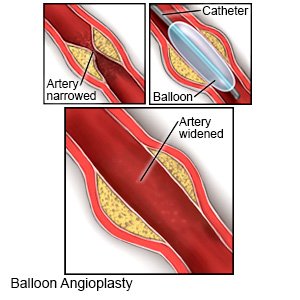
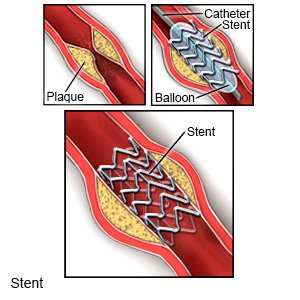
- Carotid endarterectomy (CEA) is used to remove plaque buildup from an artery.
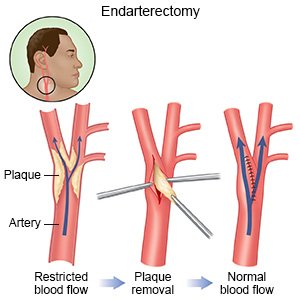
- Surgery may be used to bypass (send blood around) the blocked part of an artery. Surgery may be needed to close or fix a fistula.
What can I do to manage or prevent steal syndrome?
- Eat heart-healthy foods. Heart-healthy foods include salmon, tuna, walnuts, whole-grain breads, low-fat dairy products, beans, and oils such as olive or canola oil. A dietitian or your provider can give you more information on meal plans such as the DASH (Dietary Approaches to Stop Hypertension) eating plan. The DASH plan is low in sodium, processed sugar, unhealthy fats, and total fat. It is high in potassium, calcium, and fiber. These can be found in vegetables, fruit, and whole-grain foods.
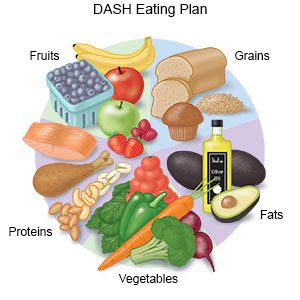
- Limit or do not drink alcohol. Ask your provider if it is okay for you to drink alcohol. Alcohol can increase your risk for high blood pressure and coronary artery disease. Your provider can tell you how many drinks are okay to have within 24 hours or within 1 week. A drink of alcohol is 12 ounces of beer, 5 ounces of wine, or 1½ ounces of liquor.
- Maintain a healthy weight. Extra body weight can increase your risk for high blood pressure and coronary artery disease. Ask your healthcare provider what a healthy weight is for you. Ask your provider to help you create a weight loss plan, if needed.
- Be physically active, as directed. Physical activity, such as exercise, helps improve heart function and can help you manage your weight. Activity can also help lower your cholesterol and blood sugar levels. Your provider can help you create an activity plan that works best for you.
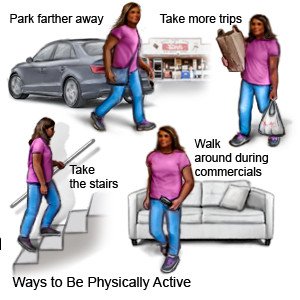
- Do not smoke. Nicotine and other chemicals in cigarettes and cigars can cause heart and lung damage. Ask your provider for information if you currently smoke and need help to quit. E-cigarettes or smokeless tobacco still contain nicotine. Talk to your provider before you use these products.
Call your local emergency number (911 in the US) or have someone call if:
- You have any of the following signs of a stroke:
- Numbness or drooping on one side of your face
- Weakness in an arm or leg
- Confusion or difficulty speaking
- Dizziness, a severe headache, or vision loss
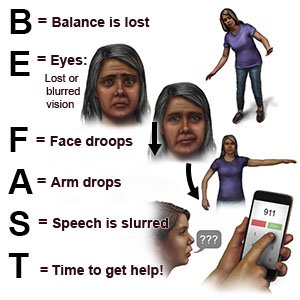 |
When should I seek immediate care?
- You have chest pain when you move around but goes away when you are still.
- You have vision changes or a severe headache.
- You have increasing shortness of breath.
- You are dizzy or faint.
- You have pain, numbness, or weakness in your affected arm that does not get better with rest.
When should I call my doctor?
- You have new or worsening symptoms.
- You have questions or concerns about your condition or care.
Care Agreement
You have the right to help plan your care. Learn about your health condition and how it may be treated. Discuss treatment options with your healthcare providers to decide what care you want to receive. You always have the right to refuse treatment. The above information is an educational aid only. It is not intended as medical advice for individual conditions or treatments. Talk to your doctor, nurse or pharmacist before following any medical regimen to see if it is safe and effective for you.© Copyright Merative 2025 Information is for End User's use only and may not be sold, redistributed or otherwise used for commercial purposes.
Further information
Always consult your healthcare provider to ensure the information displayed on this page applies to your personal circumstances.
